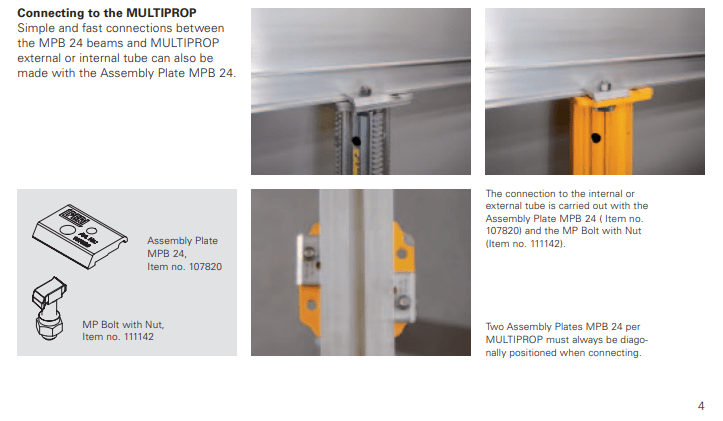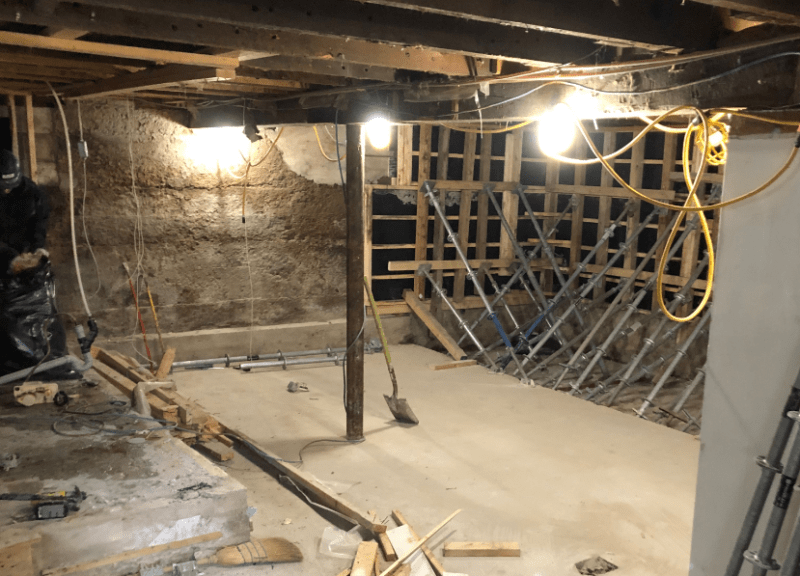-
1
- #1
Deener
Mechanical
- Aug 30, 2018
- 49
Hi All,
We're replacing some columns in the basement of an old building. When the columns are removed, I need to shore up an old 8"x8" wood beam. I can't simply place post shores beneath the wood beam since there needs to be clearance around the columns to pour new footings. So for this reason, I am using two props, which support an aluminum beam that runs perpendicular to the existing wood beam. I'm calling for beam clamps which will be used to connect the bottom flange of the aluminum beam to the top of the post shore. See Image below

The GC is arguing these clamps aren't necessary because the beam and prop are secured together by friction. This falsework is enclosed in a basement (only about 8ft high ceiling) with no lateral loads imposed.

I can understand that argument. My intuition says the beam clamps are necessary to restrain the ends of the beam from rotation. I don't want to cause extra work if it isn't necessary. I would appreciate to hear other thoughts on this.
Thanks
We're replacing some columns in the basement of an old building. When the columns are removed, I need to shore up an old 8"x8" wood beam. I can't simply place post shores beneath the wood beam since there needs to be clearance around the columns to pour new footings. So for this reason, I am using two props, which support an aluminum beam that runs perpendicular to the existing wood beam. I'm calling for beam clamps which will be used to connect the bottom flange of the aluminum beam to the top of the post shore. See Image below

The GC is arguing these clamps aren't necessary because the beam and prop are secured together by friction. This falsework is enclosed in a basement (only about 8ft high ceiling) with no lateral loads imposed.

I can understand that argument. My intuition says the beam clamps are necessary to restrain the ends of the beam from rotation. I don't want to cause extra work if it isn't necessary. I would appreciate to hear other thoughts on this.
Thanks

